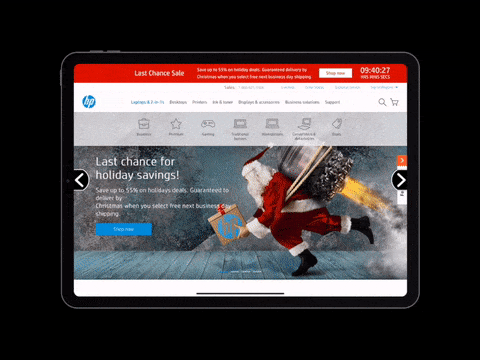Tuesday, Apple surprised developers by announcing that iOS and iPadOS 14 would be released Wednesday. Fortunately, as we revealed in our previous blog post, we invested heavily in test automation over the past few months. Over the last 24 hours, we have been able to complete dozens of full test passes on WebFrame Pro, WebFrame, and WebFrame Basic. To their credit, Apple reviewers are rapidly reviewing and approving new releases. We are happy to announce the availability of v3.0.0 of the WebFrame Kiosk portfolio of products.
WebFrame v3.0.0 Includes:
iOS 14 and iPadOS 14 Support
iOS and iPadOS 14 introduced changes in multitasking and how threads update the user interface. We introduced a work-around in the previous release to accommodate our customers using the public betas. v3.0.0 has been updated with the latest OS changes while maintaining compatibility back to iOS 12.4.
QR and BarCode Reader
While mobile Safari includes support for JavaScript-based QR code readers, Apple has not enabled that support for WKWebView-based browsers which includes many popular browsers (Chrome, Edge, FireFox, etc.) as well as other web-based kiosk solutions. To support our customers, we have created native a native QR and barcode scanner that can be called from JavaScript. After a successful read, WebFrame will return the scanned data to a JavaScript callback function that you can implement however you wish. This allows our customers to create product lookup, employee login, coupon scans, etc. For information on implementing WebFrame QR and Barcode reader on your page, please refer to https://www.wireframerate.com/webframe-user-guide#qr-reader
Easier Access to and Password Protection of In-App Settings
When enabled, in-app settings can be accessed with a four-finger double-tap gesture. This provides easier access to settings and allows configuration changes to be made to a device running in Single App Mode. Additionally, in-app settings can be protected by a passcode. As an added convenience, the passcode can be entered by scanning a QR code.
Autonomous Single App Mode (WebFrame Pro)
In addition to Guided Access Mode and Single App Mode, WebFrame Pro supports Autonomous Single App Mode (ASAM). Like traditional Single App Mode, ASAM will lock a device down to a single application with no access to the home screen, even on a reboot. As an added convenience, however, ASAM allows a configured kiosk app to start and stop a single-app session. From the in-app settings menu in WebFrame Pro, an authorized administrator can exit a single app session, access the desktop to use a line-of-business or other app, then go back to WebFrame Pro and resume a single app session.
Create a Web Archive from In-App Settings (WebFrame Pro)
When offline support was added to WebFrame Pro, creating a web archive file required either desktop or mobile Safari. In WebFrame Pro v3.0.0, you can now create a web archive from in-app settings. After creating the archive, WebFrame Pro will prompt if you would like to configure the archive as the homepage URL.
Improved Test Coverage and Bug Fixes
Our investment in test automation has not only paid dividends in our ability to quickly test and release a new build, but also exposed several lower priority bugs and quality issues in our previous releases. As we move forward, this new approach should accelerate our ability to release new features while improving product quality.
Updated User Guide
We have created a new user guide with enhanced navigation and an improved architecture that will allow the page to load faster and allow us to quickly add new content. The URL for the user guide remains https://www.wireframerate.com/webframe-user-guide





